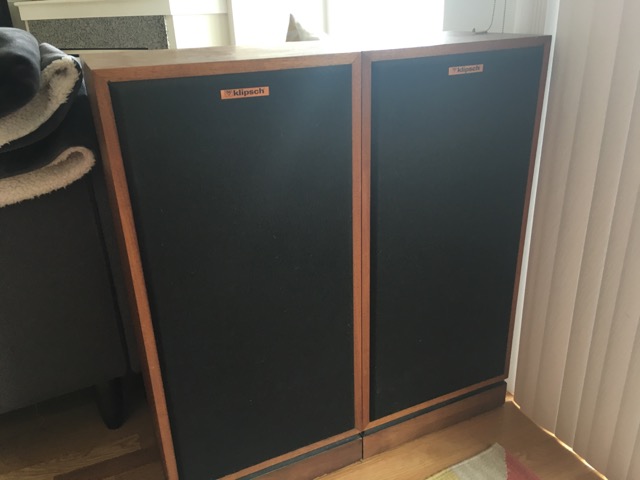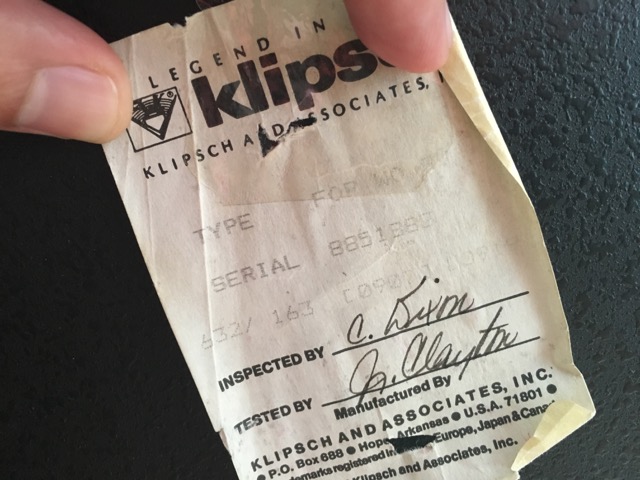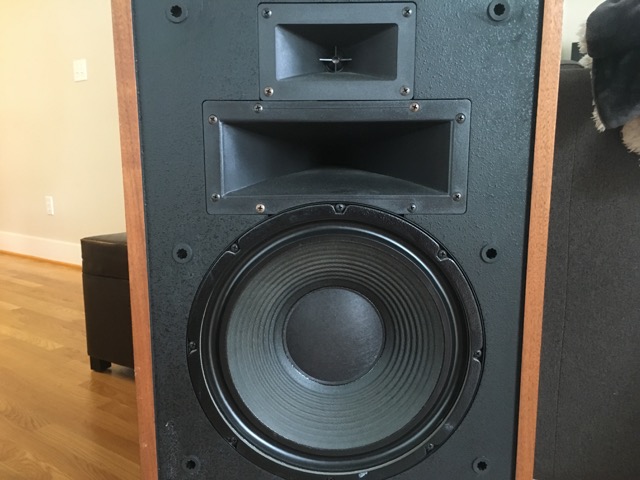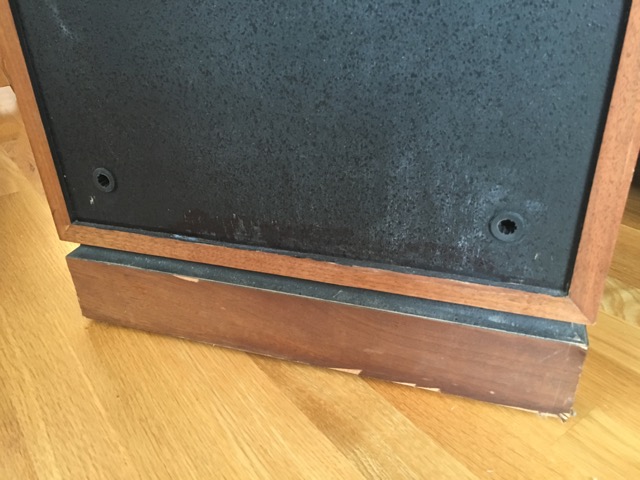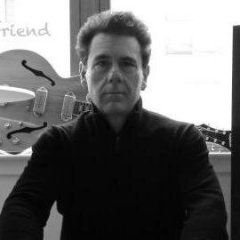Search the Community
Showing results for tags 'titanium'.
-
I believe the part number is KLP-127122? I’m assuming they will fit my drivers since they look identical to the ones in them now. I read that somewhere that this is a worth while upgrade. I already replaced the diaphragms in the tweeters in my klf20s and my Klf -C7 with the Ti diaphragms. It made a huge difference in the center channel C7. But I’m not sure if my ears pick up the Change in the klf20s yet, might need more break in time. I just pulled all these speakers out of storage been sitting for like 20 years. My dad used them for a very short time and them put them away. I’ve been using RF3 for the past 20 years without issue for home theater so I thought I’d give these KLfs a try. Also anyone know if Klipsch stills makes and sells the mid range horns for this series of speakers? One on the has a small crack that I will apoxy for now. But new horns would be nice if I can get them. Also I have experience the rattle from the loose joints on these boxes that surprisingly never was an issue on the RF3s. So was going to run epoxy all around the edges on the inside of the boxes for now. Is there any advantage to building new boxes out of like 12 ply birch plywood (I own a cabinet shop). That is also an option. Any input would be appreciated. I’m new to the forum and with the hobby of modifications to these speakers like I said my RF3s have been working flawlessly for 20 years with no issues. Just thought I’d try something new. Thanks Rich
- 9 replies
-
- 1
-

-
- midrange horn
- mid horn
- (and 6 more)
-
I put titanium midrange diaphragms in my Forte Is a while back. While I liked the added detail and separation, I noted some fuzziness and harshness in many recordings. Finally I decided to try the band pass filter which Bob Crites designed to deal with the titanium midrange's higher range. (The phenolic midrange rolls off before the tweeter kicks in: the titanium keeps going for a few hundred hz more). I ordered the boards, inductor coils and capacitors from Parts Express: I already had some solder and a soldering gun from my last project, recapping a pair of DLKs. Arranging the caps and coils was not difficult: I even managed to solder the point-to-point wiring without burning anything down. Crimping the end connectors on was actually the most difficult part: I've got a stripper/clipper/crimper combined tool which resulted in multiple terminators being insufficiently crimped and sliding off. But at last I got everything together and installed them between the squawker and the crossover. The results were impressive: gone was the distortion I had noted before and in its place was crystalline clarity. If you are thinking about adding titanium midranges I would definitely recommend building this filter and installing it. If I can do it so can you, and it's definitely worth the effort.
-
I have now installed what should be the final update in my Klipsch Forte Is -- titanium midrange diaphragms. Moray James was absolutely right: they make an enormous difference for the better in the sound. There is much better separation between instruments and a wider soundstage: there's also a far greater clarity to vocals. There are only two things to watch out for when installing these diaphragms. The first is that you must be careful about getting those big heavy drivers out of the horn slot: there's a small curve atop the left side where you can get them out with relative ease. The second is that the positive terminal on the titanium diaphragms is wider than the negative: you will need to open up the connector on the crossover wire with needle nose pliers to get it on. Neither of these are particularly difficult: if a technodunce like me can do it in 20 minutes you probably can do it in 10. As an added bonus, the blown channel on my MA6200 turned out to be a dirty speaker relay: I've now run the system through its paces with a playlist that started with Sarah Connelly singing Elgar's "Sea Pictures" and ended with Arvo Part's Lamentate with Amon Tobin, Dire Straits, Shelly Manne & his Men and others thrown in for good measure. Everything sounds fantastic and I couldn't be happier with this upgrade. (Now I can't wait to see what they sound like after a few hundred hours of break-in... ).
-
Hi, I'm thinking of upgrading the tweeter diaphragms of my Herey II's. I was thinnking of Bob Crites's tweeters, but unfortunately the shipping costs to the Netherlands are a bit much. I found a more local place for me in the Netherlands, where they sell silk replacement tweeter diaphragms for the K-76- tweeter, but they also sell titanium diaphragms for the K-79-H tweeter. They are stated as both being 6 Ohm, the titanium is stated as being flat over 20Khz. I was wondering if these tweeter diaphragms are interchangeable and so whether I can use the K-79 diaphragms in my Heresy II's K-76 tweeters. Thanks in advance, Laszlo
-
Selling my favorite speakers I've ever owned. Space constraints force sale, and they are not being used right now so they should go to a fellow enthusiast who would appreciate them. Never overdriven (only used with an AVR247 receiver). I've attached a writeup of the crossover rebuild by the previous owner, who is a member of this forum. Features Crites titanium tweeter diaphragms Jantzen biamp/biwire crossovers with Crites autotransformers Jantzen internal wiring Dampened driver baskets and horns Plexiglass binding post plates with biamp/biwire option New driver gaskets and cabinet sealing Condition 8/10, some minor chipping/scuffing along base but pretty good for 20+ year old floor standing speakers. Price $600 OBO (but please don't lowball) Shipping I can arrange shipping within the continental US for $200. If they don't sell in 2 weeks they're going on ebay. merged.pdf
- 16 replies
-
- 1
-

-
- titanium
- klipsch forte
-
(and 3 more)
Tagged with:
-
I have a pair of 1984 first gen KG4's (even though they are listed as starting production in 1985, the labels on the back say 1984). I never liked these speakers! They sounded very harsh and edgy, yet yielded a very good sound stage, but they just fatigued my ears. Five years ago I read on one of the Klipsch forums about Bob Crites having designed and contracted a fabricator to make a titanium replacement for the phenolic horn drivers showing scope readings of a virtually, very flat response on supposedly sounding much smoother and liquid. For about $50 I ordered the pair and swapped them in and everything that people were saying was true. Very smooth, open, and airy, but without the jagged harshness. It was like listening to a completely different speaker -- one I fell in love with and became my main speakers. A couple of weeks ago, I read about the capacitors loosing their life around the 20 year mark and it hit me that the caps in my 1984 KG4's are now 31 years old. When back to Bob Crites' website and for $100 I could send him the original networks for a cap replacement, or for $200 I could receive new networks with all upgraded materials including new chokes, etc. -- I opted for the latter. I ended up removing all of the old “stacked-up” networks of this first gen that had everything glued up in a pile on the back of the input panel – turns out that the choke and transformer? (coiled bobbin) just popped off the plastic input back panel by prying a flat head underneath them and giving a little twist, removed the 3 screws, popped off the one cap that was glued, and cut the wires to the terminals. Then new network board fits on the wood floor of the bottom of the cabinet attached with velcro. After I finished wiring the first cab, I decided to do an A/B comparison between your network and the original 31 year old network. I conducted a very good test condition by putting on a mono LP, The Kingston Trio, and threw the balance knob Left/Right to compare them back and forth… let me tell you something, it was a dramatic difference! The old network sounded like the banjo was being played underneath a quilt. So, even though the speaker cab with the new network sounded brighter, and more open and airy, I would say it wasn’t adding anything, but simply allowing what was naturally in the recording to come through, whereas, the 31 year old network was not allowing all the highs to pass through to the horn. When I listened to the speaker cab that still had the original network, it was a kin to turning the treble control about 3/4’s the way down. As far as the bass, I’m not sure if it’s in my head or not, but it sounded a little tighter – just as strong as before, but with a little less resonance. Once again, Bob Crites has amazed me with his quality designs and engineering. I now have the ultimate KG4’s with Crites’ titanium horn drivers and upgraded, new networks! BTW, they are works of art just to look at (see before and after pics). And because the new networks are mounted on new cedar boards, they smell good too! I’ll never have to worry about moths in my speaker cabs I'm sure all of you know about Bob's Klipsch upgrades and maintenance services, but just in case you don't: www.critesspeakers.com Original 1984 network: New Bob Crites network:


